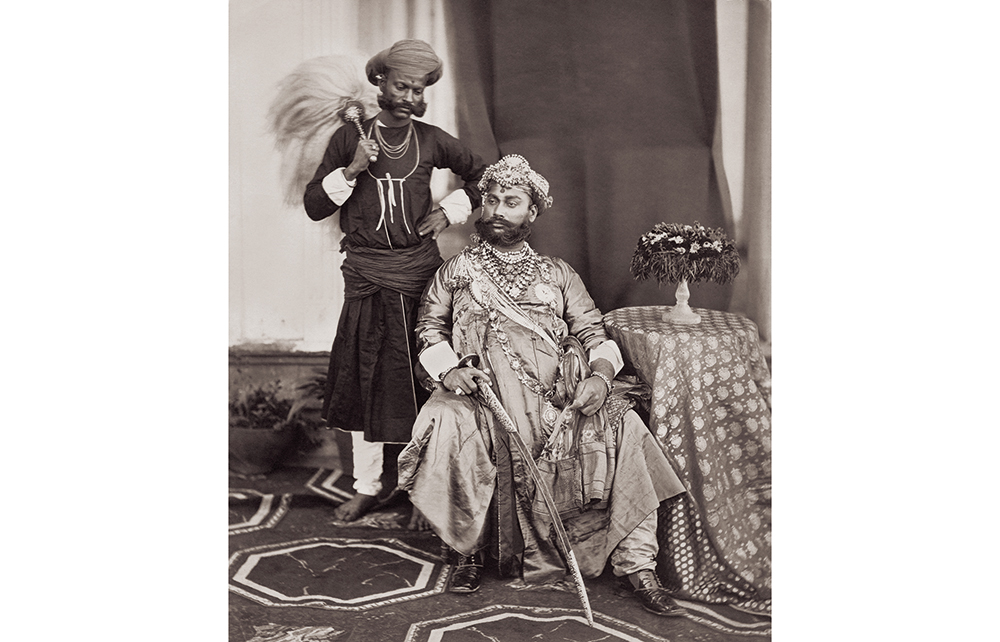On 25 July 1947, in the searing heat, almost 100 princes bedecked in jewels gathered in a circular room in New Delhi. Some of them ruled over principalities of less than a square mile; others over an area larger than Korea. All of them had been Britain’s close allies for more than a century and, now that the British were leaving India, many looked forward to regaining their states’ independence.
But on that fateful day, as Lord Mountbatten swaggered around in his ivory white uniform, anxious murmurs rippled through the throng. A cousin of George VI, and related to virtually every royal in Europe, the viceroy was no republican; yet he was about to set in motion one of the great revolutions in world history. He made it clear that if the princes refused to accede to either India or Pakistan, Britain would not come to their aid. It was the death knell of a princely order that had reigned since antiquity.
John Zubrzycki’s Dethroned tells the epic story of how more than 550 sovereign states vanished from the map. India would increase in size by almost two-thirds, while Pakistan’s land mass would virtually double. No other revolution has ended so many monarchies in such a short span, yet the story is still little known.
The changes of fortune that accompanied this were immense. Since the fall of the Ottoman caliphate decades earlier, the Nizam of Hyderabad had, arguably, been the world’s foremost Muslim ruler and his capital the most prominent city of Muslim learning outside of Arabia. His state’s economy rivalled Belgium’s, and with the death of J.D. Rockefeller he became the richest man in the world. But within a few decades, his heir was forced to sack his 14,000 servants – including 38 men employed to dust the chandeliers, and others specifically to grind walnuts – and flee to the Australian Outback, where he became a sheep farmer. His son, the heir to both the Hyderabad and Ottoman thrones, would become a cameraman for Indiana Jones and the Last Crusade.
At the centre of Zubrzycki’s extraordinary story are the two architects of the princes’ downfall. Sardar Patel was a gruff, uncompromising Gujarati congressman, second in command to Jawaharlal Nehru, who mixed ‘fury with charm and persuasion with coercion’. His right-hand man was V.P. Menon, a chain-smoking civil servant, famed for having burnt his school to the ground. This unlikely duo used diplomacy and occasionally force to corral the princes into merging their states with either India or Pakistan. A contemporary journalist would dub Patel ‘a Hindu Cromwell, courteously decapitating hundreds of little King Charleses’.
Most reporting on the downfall of India’s princes has relied on Menon’s brilliant but biased account, which paints the process as much smoother than it was. As Zubrzycki demonstrates, many more states made a bid for independence than is usually acknowledged, and in some cases these movements had widespread support. The poster boy of Hindu nationalism, V.D. Sarvarkar, not only celebrated the Kingdom of Travancore’s struggle for independence but saw divine kingship as ‘the foundation on which the future nation could be launched’.
The Nizam of Hyderabad had to sack his 14,000 servants and flee to the Outback to become a sheep farmer
Not a single monarch was killed in this revolution, prompting the Soviet premier Nikita Khrushchev to ask: ‘How did you manage to liquidate the princely states without liquidating the princes?’ But, as Zubrzycki shows, the downfall of these states was far from being a bloodless revolution. Many of those that resisted integration were invaded, and in Hyderabad alone this led to at least 25,000 casualties. (There were some reports of a death toll of 200,000.)
Disputed accessions continue to plague the region to this day, from Manipur, on the border with Myanmar, to Kalat in Balochistan. But most controversial in 1947 was Kashmir, a Muslim majority state ruled by a Hindu maharaja, where mass anti-Muslim violence in the winter capital of Jammu led to the first example of irregular warfare across the Indo-Pakistan border. Aided by members of the Pakistan establishment, tribal militias dressed as civilians entered the state, causing the maharaja to cede to India in self-defence.
Obliterating so many separate states entailed huge economic and cultural loss. These entities had upheld age-old traditions of painting, music, dance and crafts; but when all the royal families were paid off by ‘privy purses’, ancient art forms vanished and thousands of bards, artists, courtesans, camel trainers and courtly cooks found themselves unemployed, their patronage lost.
Yet the merger of the states also created the world’s largest democracy – one that many of the princes themselves took part in. Zubryzski takes the story up to 1971, the year that Indira Gandhi ‘wielded her parliamentary sword and deftly and definitively consigned the princely order to the history books’ by revoking the last royal privileges. This was not done out of moral disgust with the idea of monarchy but because the princes were such successful politicians in a democratic India. By 1971 almost a third of the princes endowed by the privy purse were in politics, with a vendetta against the Congress party. They proved crucial to cementing the opposition and were a force to be reckoned with at the ballot box.
Dethroned is set to become a classic on the end of India’s and Pakistan’s aristocracy. The downfall of the princely states has finally been given the theatrical telling it deserves.






Comments